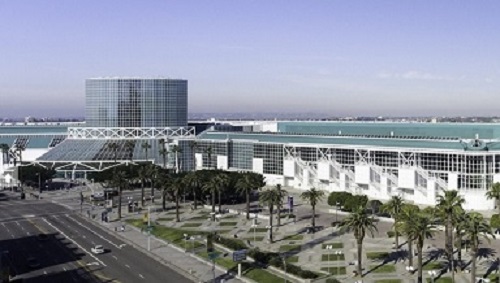








The U.S. Green Building Council released its LEED in Motion: Venues report, which highlights the efforts of convention centers, sports venues, performing arts centers, community centers and public assembly spaces to transform their environmental, social and economic footprint through LEED certification. The report showcases some of the most impressive green venues around the world.
“The scope and scale of the venues industry is enormous, and the leaders creating these spaces have an important role to play in reducing environmental impact,” said Mahesh Ramanujam, President & CEO of USGBC. “By incorporating green practices, venues around the world are positively impacting their triple bottom line—people, planet, profit—while inspiring and educating others to be proactive in the areas of social responsibility and sustainability.”
Venues are large contributors to the U.S. economy. The U.S. Bureau of Labor Statistics reports that the number of conventions and events is expected to expand by 44 percent from 2010 to 2020—far outpacing the average projected growth of other industries. Annually, the top 200 stadiums in the United States alone draw roughly 181 million visitors, and roughly 60 million people worldwide attend a consumer or industry trade show. Waste Management estimates that the NFL, MLB, NBA and NHL generate a combined 35,000 metric tons of CO2 each year from their fans’ waste. The convention and trade show industry, one of the largest global contributors to waste, produces an estimated 60,000 tons of garbage each year.
Many LEED Certification Benefits
Venues that incorporate LEED (Leadership in Energy and Environmental Design), the world’s most widely used green building rating system, into their buildings enjoy increased cost-savings, decreased annual operating costs and a higher return on investment overall. According to the 2015 Green Building Economic Impact Study, from 2015 to 2018, it is estimated that LEED-certified buildings in the United States will have saved more than $2.1 billion in combined energy, water, maintenance and waste savings.
The report highlights the green strategies and savings of more than 30 LEED-certified venues across the globe, including Orlando Magic’s Amway Center, the first NBA arena to earn LEED Gold certification using the LEED Building Design + Construction: New Construction rating system. The Center was able to save nearly a million dollars a year, including close to $700,000 in annual energy costs alone because of LEED certification.
At one of the most renowned regional theaters in the country, The Old Globe’s 108,000 square foot complex in San Diego, green strategies were implemented so as not to disrupt the buildings’ aesthetics and primary focus on performance. Low-flow fixtures and aerators reduced overall water usage by 32 percent, LED retrofits and timer installations resulted in savings of more than 14,000 kilowatt hours per year, and an increase of recycling bins and staff education created the potential for more waste diversion.
Another prominent example is Shanghai 2010 Expo Center’s implementation of sustainable strategies such as a vegetable roof garden, rainwater recycling system, LED lighting, water source heat pumps, high-efficiency water-use fittings and irrigation, which resulted in the project achieving 82.5 percent annual total water savings and a 93 percent reduction in storm water runoff volume.
Global Green Building Doubles Every Three Years
LEED is used in more than 164 countries and territories with international demand continuing to grow. According to the Dodge Data & Analytics World Green Building Trends 2016 SmartMarket Report, global green building continues to double every three years. In the next 10 years, green building’s growth rate is expected to continue at both the domestic and international levels. USGBC’s recent Green Building Economic Impact Study analyzed the economic impact of green construction on the U.S. economy and found that LEED-certified buildings accounted for 40 percent of the green construction market’s contribution to the U.S. GDP in 2015. The report also projected that by 2018, green construction will account for more than 3.3 million jobs and generate $190.3 billion in labor earnings in the United States.
LEED is a simple and effective program for navigating complex, sometimes competing, building and environmental issues affecting humans worldwide. Every day, more than 2.2 million square feet of space certifies to LEED. There are more than 36,300 LEED-certified commercial projects representing more than 5.4 billion square feet of certified space and an additional 53,180 projects, totaling 11.6 billion square feet of registered space.
LEED in Motion: Venues is the latest in a series of reports from USGBC designed to provide a holistic snapshot of the green building movement. The report equips green building advocates with the insight and perspective to understand the use of the globally recognized LEED rating system and to make a strong case for sustainable building activity.
Copyright 2006-2025 Shanghai Sinoexpo Informa Markets International Exhibition Co., Ltd. All rights reserved